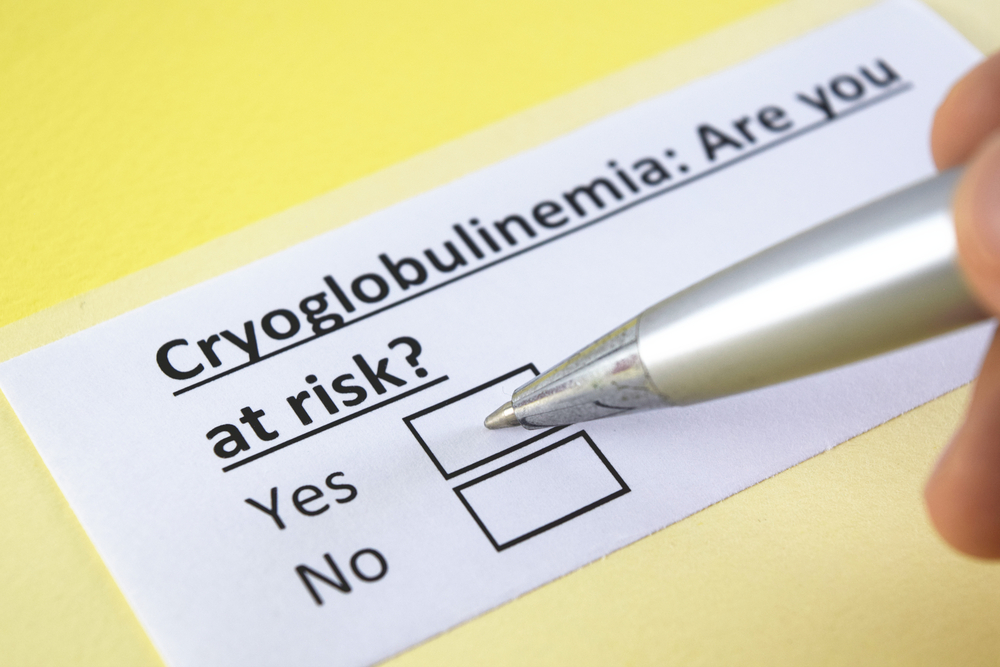TYPES
Mixed cryoglobulinemia is synonymous with Cryoglobulinemic Vasculitis. Here is the subdivision of mixed cryoglobulinemia;
- Essential Mixed Cryoglobulinemia
- Type I Cryoglobulinemia
- Type II Cryoglobulinemia
- Type III Cryoglobulinemia
SYMPTOMS
Common symptoms may include:
- Skin lesions
- Joint pain and arthritis
- Enlargement of the spleen
- Nerve and kidney disease
However, specific symptoms may vary from one person to another and can involve other organ systems.
- Skin vasculitis with purplish patches is another symptom associated with cryoglobulinemia. Individuals affected develop purplish discoloration of the skin. It is due to the bleeding underneath the skin coming from the small blood vessels.
In some cases, cryoglobulinemia is associated with membranoproliferative glomerulonephritis (MPGN) type I, a renal kidney disease. The illness is described as having a specific injury pattern in the kidney caused by the deposition of cryoglobulins present in the kidney. This type of kidney disease can be a severe complication leading to kidney failure.
Chronic hepatitis can be associated with essential mixed cryoglobulinemia, specifically hepatitis C. Both hepatitis C and cryoglobulinemia have similar symptoms like fatigue and aching joints and muscles. Eventually, hepatitis can progress to scarring of the liver.
It can lead to recurrent pain in the abdomen, heart attack, and bleeding in the lungs.
Weight loss and poor appetite can also be a symptom.


